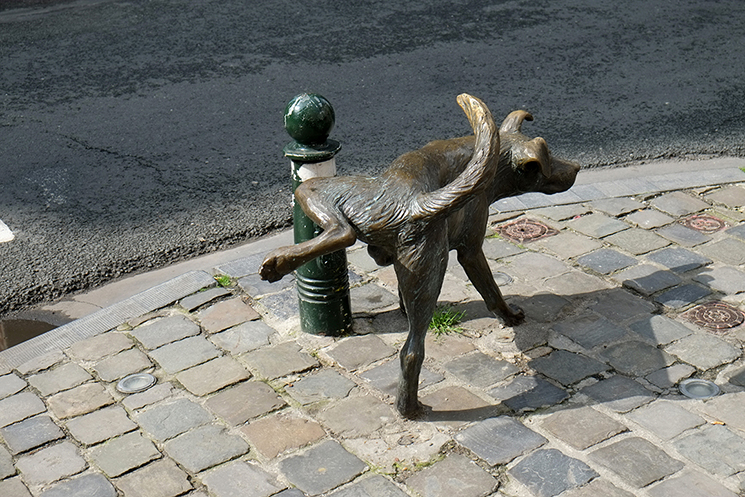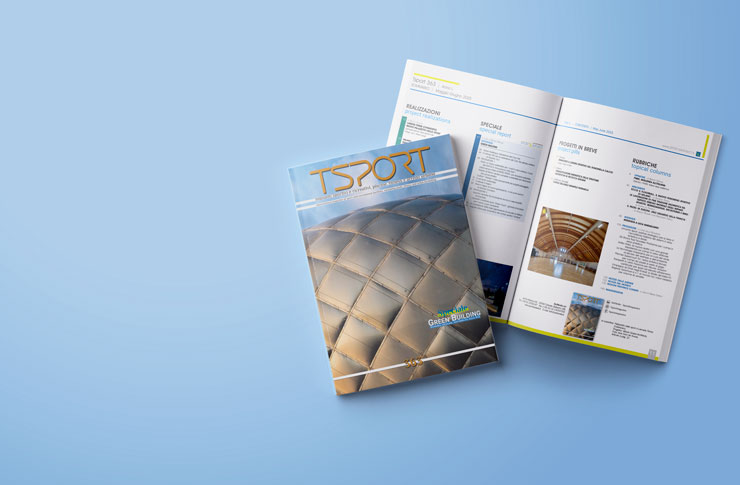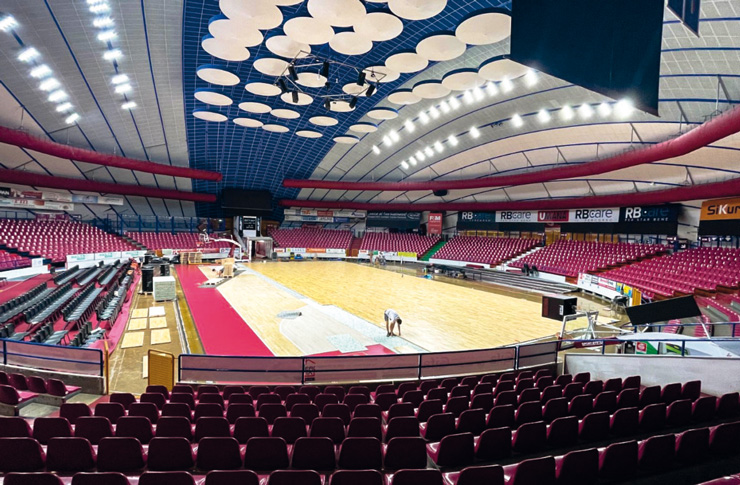The topic was discussed by Bruno Grillini, architect, and Giovanni Bucci, veterinary doctor, during an evening organized in Trento on May 22 by the DogBliss Association, under the patronage of the Lions International section of Trento, the Order of Veterinary Doctors of the Province of Trento and the Municipality of Trento, and coordinated by Monika Mann.
Dogs, greenery and sidewalks

In the manuals concerning the design of green areas, and urban green areas in particular, the user par excellence – the object of the analysis of needs and criticalities – is always man, or, for a more modern ecological vision, flora and fauna as the elements bearers of biodiversity.
The pet, which is not a citizen and is not a wild animal, is absent.
With the increase of the diffusion of pets in the Italian families, the cohabitation between the needs of the man as a single user of the green or of the sidewalk, and those of his four-legged companion, tends, however, to become a problem.
A problem of two types: hygienic and safety.
The needs
The now usual solution of dividing green areas into sectors with diversified usability, in order to guarantee hygiene conditions at least in the spaces usually frequented by children, constitutes an initial empirical approach to the problem.
Like any design problem, it is necessary here too to acquire all the information useful to understand the needs of the user: therefore, the data of an ethological-physiological nature that allow you to characterize and size the spaces for walking and dog movement: the first consequences of the dog’s free access to public spaces are the possible episodes of aggression between individuals of different sizes or even against adults and children, as well as the release of excrements.
City planning
Living in the countryside or near large natural green areas reduces the problem of living together with dogs and citizens to almost zero.
But if we take our historical centres as a reference, made up of a dense texture of buildings and paved paths, we must admit that the needs of dogs are almost incompatible with the pure hygiene of places. If you live in the centre, you will never be able to reach a suitable area before your pet has fulfilled its natural physiological needs.
The new boroughs are now “obliged” to be born with green areas. This does not mean that the dog is allowed to dirty the lawns or freely bite his fellows or children who frequent the same places: in well mantained parks where cleaning is constant, the education of the owners ensures that there are no aggressions (the dogs are on a leash or away from playgrounds) and that there are no excrements on the lawns and paths (the owners are equipped with special bags, the containers are spread and are emptied periodically). If there are no large open lawns, the fenced “dog areas” can be used for running without a leash.
But if the park is not well maintained, the sidewalk is uneven, and the baskets are not emptied, the spirit of imitation soon prevails: the owner will tend not to give himself the effort to collect the excretion of his dog, and the degradation will advance unstoppable.
Unfortunately – apart from the education of citizens – the maintenance of public green has to deal with the budgets of public administrations: the green that must obligatorily be born next to new building lots will be maintained by the operator for a short time as per convention: when it passes to the public hand, the manner and timing of cleaning and maintenance will often be reduced for economic reasons.
The dogs area project
At one extreme, therefore, there is the urban sidewalk, where the essential need for canine must be flanked by the civic sense of the master who must get rid of any excretion, and it would not be bad if he also provided to rinse with a bottle of water urine spills.
On the other side, there are large parks, such as Parco Nord Milano, which offer spaces so wide and varied that they do not have to impose restrictions except for the respect of the areas – never fenced – where the dog can run freely as an alternative to those dedicated to walking and where it must be kept on a leash.
In all other cases, it is now widespread, as already mentioned, the creation of so-called “dog areas” within urban parks or, possibly, as autonomous areas in the city.
Design, in general, does not show much imagination. The objective is to fence a space (often less than 2000 square meters), with the main purpose of making other users of the park safe; possibly, it is planned to divide the area into two areas for larger and smaller dogs; a short section paved at the entrance, to protect the shoes of the owner, and one or two benches.
The hygienic aspect, where it is considered, includes the presence of waste bins and a classic distributor of bags.
Exploiting some of the ethological principles related to the release of physiological needs, is often provided a sandpit, about 20 square meters, equipped with one or more wooden poles about seventy centimeters high. The sandpit must be kept under control with the periodic replacement of the surface layer to prevent the formation of fungi or parasites. Naturally, the subfloor must be suitably drained to ensure correct drainage.
Let’s be clear that this is not necessarily the best solution: so much so that, if in areas of the city without green areas the dog area is very utilized, in larger parks this turns out to be a less pleasant ghetto compared to the open spaces outside, and is ultimately less frequented.
All this, if sheltered from the possible aggressiveness of the dog (but with problems in case of crowding, for the competition between individuals locked in the same enclosure), does not solve the hygiene problem since the owner and / or the maintenance of the area will still have to take care of the manure.
Special equipment
Many local engineers have tried to experiment with specific “toilets” for dogs in the hope of solving the problem of kerbs being left on the pavement.
The illustration, available on the web, of many small initiatives that have never been widespread suggests that the ideas proposed are not yet fully effective.
The so-called “pipican”, which can be seen above all in the Spanish peninsula, foresee a constant spraying of water on the surface, in contradiction with the bad propensity of the dogs to “get it” in the wet.
Other more cumbersome devices, such as real squat toilets, do not seem particularly welcome. Sandblasts of different sizes, both on emptyable substrates and on flowerbeds, once again present the problem of constant cleaning of the layer.
So at the moment, despite the architects of greenery and hydraulic engineers, there does not seem to be a winning solution that goes beyond the education and civic sense of dog owners.
Dogs and sidewalks: 4 steps between physiology and behaviour
by Giovanni Bucci
Faeces refers to what is emitted by living beings in the animal kingdom in the final phase of the feeding cycle (rejection of the digestive process). Urine, on the other hand, is the final product of kidney excretion, through which metabolic products present in the blood are eliminated from the body.
The point of view of the dog
For dogs, defecation and urination are voluntary acts with precise space and time limitations related to age and health and characterized by two important values: physiological (need) and communicative/social (markings). Most dogs, when they can, frequently eliminate not out of necessity but because many social and communicative values are inherent in the elimination behaviour. If we exclude puppies who have yet to learn the social rules behind these behaviors, adults in a non-emergency situation, always defecate and urinate with the intention of marking the territory.
Unfortunately, we humans lack the organs responsible for reading the canine markings and therefore we can never know with absolute certainty the actual impact of this form of communication of the dog. We know with certainty that by marking the dog learns if the other dog is male or female, the age and social status, the physiological state, any situations of disease, the composition of the food taken, etc. etc.. Considering only the sense of smell, science tells us that dogs perceive smells 15,000 to 18,000 times better than us. These numbers are difficult to understand but they help us to understand how limited our nose is compared to theirs.
The markings are made with urine, faeces, and secretion of glands located in various parts of the body, such as the perianal or interdigital glands. Urine is undoubtedly the most commonly used medium, and it allows the dog to carry as much information as possible. This is followed by the faeces which, when faced with less information, guarantee a more resistant “message” over time.
How does the dog mark the territory? There are no fixed general rules. The innate behavioural bases are modified by behaviours learned by the puppy from adult imitation and environmental influences.
To urinate, adult males and females behave differently; the male raises one of the hind legs and often also a part of the body and then sprays the urine on the surface to be marked. The higher the markings, the easier it is for them to be detected quickly and more clearly. This behaviour is generally maintained even after castration and only male-castrated pre-pubert dogs sometimes behave like females even as adults. The female, on the other hand, curls up and keeps the typical modalities of the puppy.
Faeces are deposited on the ground without covering them; self-confident males usually defecate in positions well in view and sometimes even on raised surfaces; females and unsafe and small subjects generally in more secluded places.
Many dogs do not defecate in a single evacuation. Both urination and defecation can be followed by rasping of the ground: this adds information related to the pheromones of the interdigital glands and distributes the message over a wider area (the dog claims its presence and rank).
We have already seen that physiological and communicative needs overlap. If we analyze the simple need to evacuate there are many factors that come into play. They cause an increase in the need to evacuate: some individual characteristics, the type of food, pregnancy, many pathologies, etc.. Instead, they cause a decrease in the need to evacuate: constipation, cold, fears and phobias, etc..
There are also a number of factors that influence the frequency of markings. They cause an increase: heat or the presence of females in heat, changes in the composition of the family, anxious conditions, the presence of foreign animals, removals or frequentation of foreign places, the presence of markings of others.
Dogs are more likely to mark rough surfaces with urine, which become easily impregnated or which, due to their characteristics, retain more of their odours. For urinary markings the dog prefers vertical surfaces and trees and is attracted by wood, walls, rubber and, if male, by vertical substrates already marked by other male dogs. Preferred points are corners (walls, jambs, etc.), protrusions and poles, because the olfactory message is dispersed more easily and in more directions. Female dogs urinate more frequently on horizontal substrates (lawn, soil, cement, etc.) and at the base of the males’ markings.
With regard to the faecal markings, self-confident male dogs prefer well visible areas and the points where other dogs have defecated and usually rasp the ground by scattering the faeces; insecure male dogs and females often prefer somewhat secluded places.
An important point of attraction are also surfaces treated with detergents or substances able to fix ferhormonal messages or reminiscent of urine (produced with chlorine or NH4), and surfaces “virgin” or thoroughly cleaned with perfumed substances or able to remove pheromones.
Fortunately, there are also factors that decrease the dog’s desire to mark.
The dog instinctively does not mark where it sleeps and (less) where it eats; it does not mark on the water because the water is not able to retain the olfactory messages. This is why your dog does not like to mark surfaces that are green-blue, water-like or seem wet. The dog avoids marking even when it is on grids or passages that allow you to see through; in this case there would be a component related to fear and one related to the inability of these substrates to maintain urine and faeces.
Dogs do not mark even surfaces with strong penetrating odours and in particular if of an alcoholic type. The smells that seem to be most dissuasive are those of citrus fruits and mint, which is why most of the deterrent products on the market are based on these essences.
It is important to note that substrate preference is not a definitive acquisition and an appropriate educational pathway can re-orient and broaden substrate preference. Educational courses for the preference of substrate take time and patience but dogs quickly learn which substrates are prohibited (not forgetting that the urgency always exceeds the prohibition!).
The views of the owner and the citizen
For the owner, faeces and urine are a “necessary evil” but with some important positive implications: first of all, the fact that faeces and urine are an important indicator of the state of health of their dog and for this reason the owners always check careful defecation and urination to assess and collect samples if necessary.
The inevitable multi-day walk is also a good excuse and motivation for a bit of chat and exercise.
For the citizen who does NOT have a dog and walks on the pavement, the physiological needs of other dogs represent all or almost all of the possible evil. There are, however, good reasons to be friends with dogs and their owners, the main one being that the districts with dogs have a lower delinquency rate linked to the presence of dogs but also to the greater presence of people in the street even at unusual times.
The point of view of the administrations
Faeces and dog urine cannot be considered just an issue of education and cleanliness. Administrations are confronted with two important issues: public health and regulation.
Dog faeces can carry diseases that can affect humans (zoonoses) as well as other animals. Human infection is a rare event because it requires orofecal contact (hands, food, water), but it is an event that must be considered. The dog’s faeces, like those of all other animals, are a real “waste” that must be disposed of and treated appropriately.
In terms of current regulation, the only way forward in trying to save dogs and pavements is by means of prohibitions and sanctions that are built to serve the solutions that are put into practice.
Solution 1: General prohibition and sole responsibility for collection and cleaning for the owner / carer; penalties for offenders.
Solution 2: Permitted and prohibited areas; where dogs are not expressly prohibited they can urinate or defecate; the owner is required to collect and clean. Some administrations offer urban etiquette courses, which are optional and possibly mandatory for repeat offenders.
Solution 3: Permitted and prohibited areas; no obligation for the owner to collect; free courses to educate about proper evacuation. The owner must attend a course before adoption in which he is instructed in the rules. When adopting you should attend a course with your dog to educate him about proper evacuation.
The cleaning of the permitted areas is the responsibility of the administration with its own specialist staff (which guarantees better hygiene). Possibly mandatory reporting of released evacuations, and penalties if the dog gets dirty in areas not allowed.
Each of these solutions has clear advantages and many shortcomings and there is still a long way to go. A first step should be to abandon the logic of prohibitions and punishments and try to change the way of dealing with the problem: in democracy laws, rules and regulations must develop in favor of the majority and, statistics in hand, the owners of animals are about 78% of the population.
Educational campaigns should also be designed in a way that is appropriate and responds to the characteristics of the urban fabric. The recipients, the timing and the content must be clearly identified.
For educational campaigns to be successful, it is also extremely important that benefits and incentives are provided for owners who behave correctly and that access to courses is easy and inexpensive.










